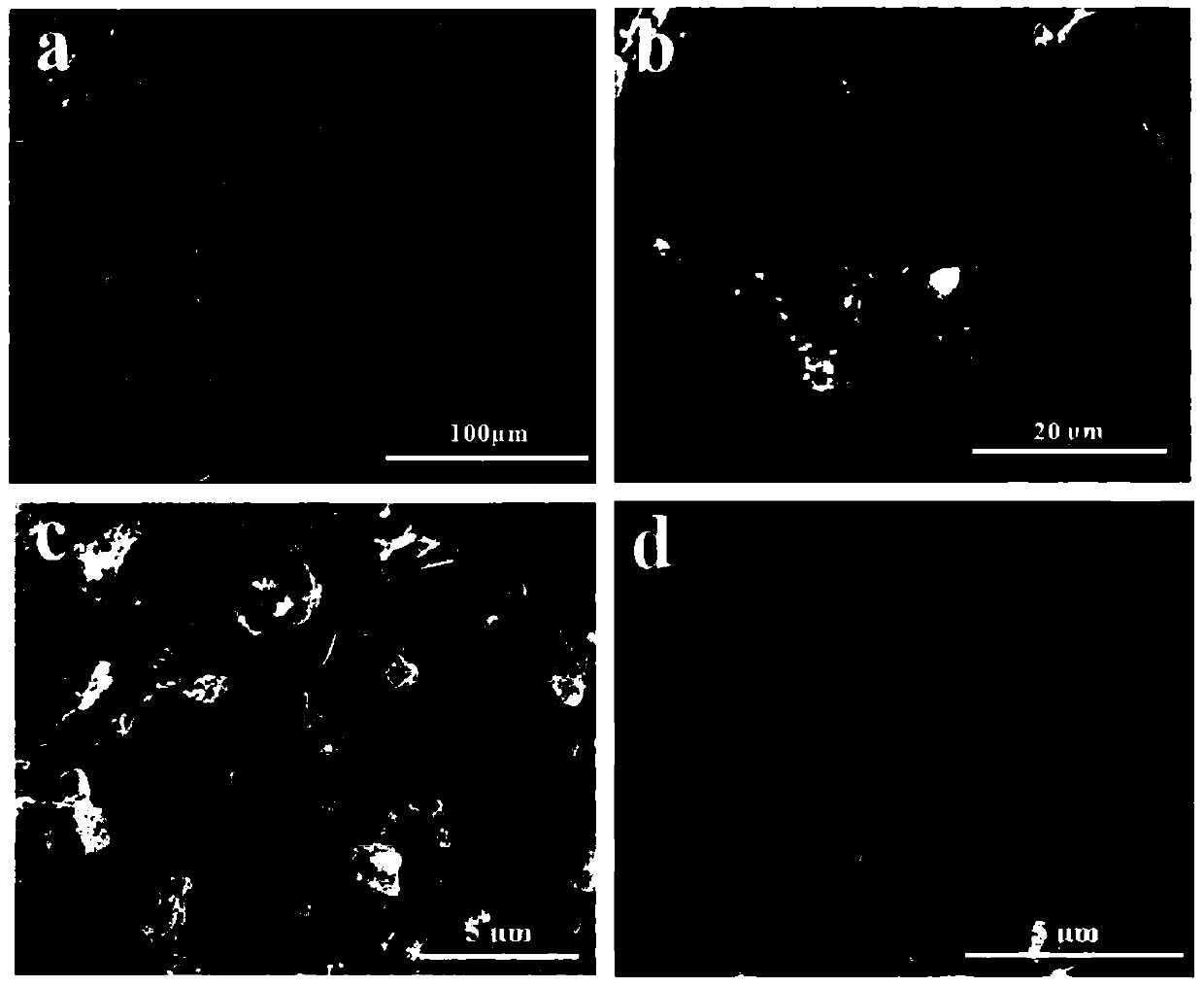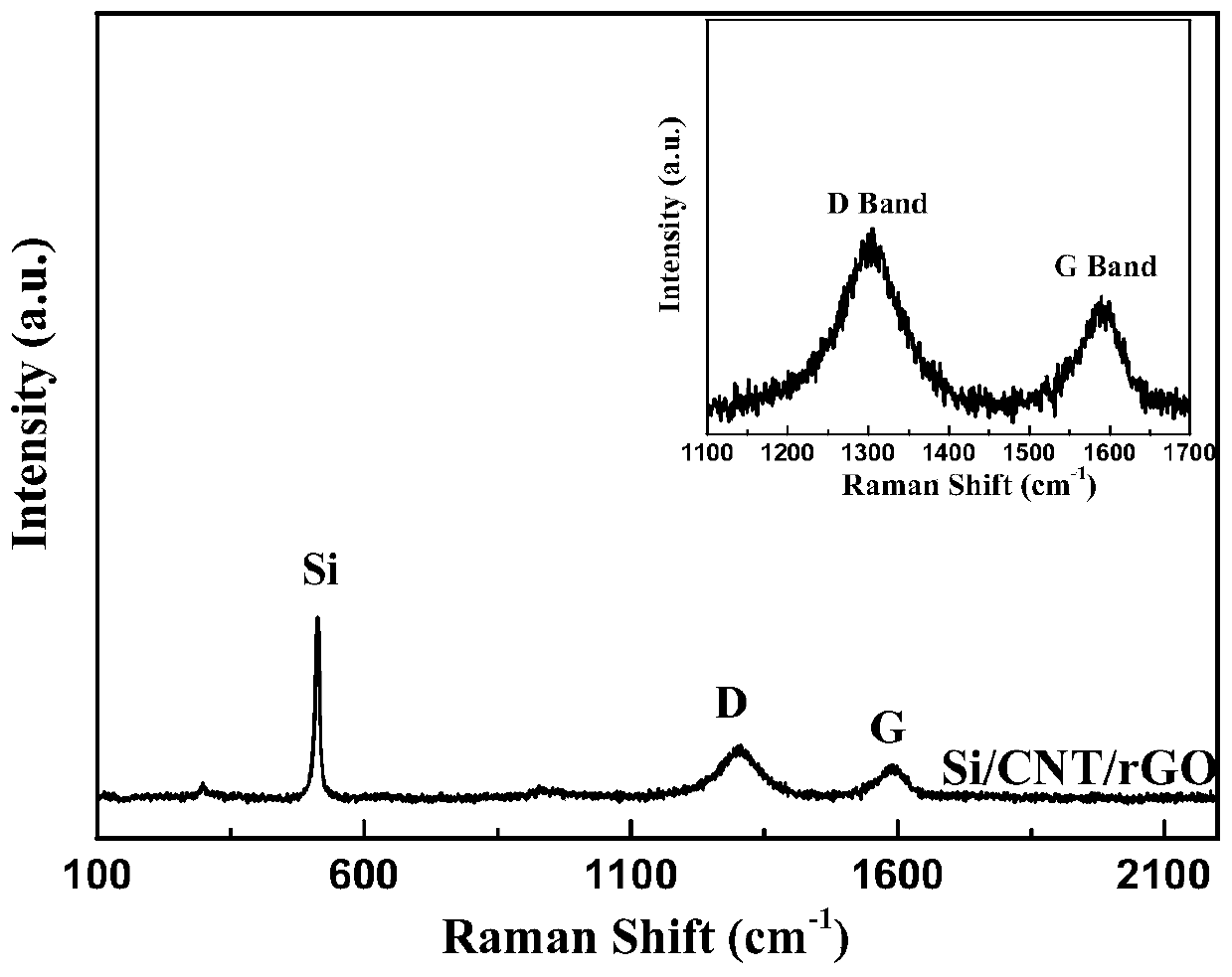Carbon nanotube/graphene/silicon composite lithium battery negative electrode material and preparation method thereof
A carbon nanotube composite, carbon nanotube technology, applied in the direction of carbon nanotubes, battery electrodes, nanocarbons, etc., can solve the problems of electrode cycle performance decline, silicon-based negative electrode capacity decline, charge-discharge efficiency drop, etc. Good discharge capacity, improved negative rate, and low cost
- Summary
- Abstract
- Description
- Claims
- Application Information
AI Technical Summary
Problems solved by technology
Method used
Image
Examples
Embodiment 1
[0030] This embodiment provides a preparation of a 5-layer CNT / rGO / Si-NPs composite lithium battery negative electrode material, including the following steps:
[0031] Step 1. Press the nickel foam into a disc, place it in acetone and ultrasonically clean it for 10 minutes, and then clean it with deionized water;
[0032] Step 2, adding graphene oxide powder into absolute ethanol, ultrasonically dispersing for 30 minutes, and preparing graphene oxide solution A with a concentration of 1M and graphene oxide solution B with a concentration of 2M;
[0033] Step 3, adding nano-silicon (Si) to a dilute hydrofluoric acid solution with a concentration of 4M and ultrasonically cleaning it for 30 minutes, washing it with deionized water, and drying it by centrifugation; : In the mixed solution of ethylene glycol=9:1, the prepared concentration is 1M silicon dispersion solution; then hydroxylated carbon nanotubes are added to the silicon dispersion solution, the concentration of carbon...
Embodiment 2
[0047] 3-layer, 7-layer, 9-layer, and 11-layer CNT / rGO / Si-NPs composite lithium battery negative electrode materials were prepared by the same process as in Example 1. The structure and electrical properties were characterized and the test results remained the same as in Example 1. .
[0048] In conclusion, through the material structure design, through the mechanical support and high conductivity of carbon nanotubes, silicon forms a stable SEI film during charge and discharge; the excellent electrical properties indicate that this method is a practical high-performance silicon composite anode preparation approach to commercial Li-ion battery applications of silicon.
PUM
| Property | Measurement | Unit |
|---|---|---|
| diameter | aaaaa | aaaaa |
| length | aaaaa | aaaaa |
| diameter | aaaaa | aaaaa |
Abstract
Description
Claims
Application Information
 Login to View More
Login to View More - R&D
- Intellectual Property
- Life Sciences
- Materials
- Tech Scout
- Unparalleled Data Quality
- Higher Quality Content
- 60% Fewer Hallucinations
Browse by: Latest US Patents, China's latest patents, Technical Efficacy Thesaurus, Application Domain, Technology Topic, Popular Technical Reports.
© 2025 PatSnap. All rights reserved.Legal|Privacy policy|Modern Slavery Act Transparency Statement|Sitemap|About US| Contact US: help@patsnap.com



